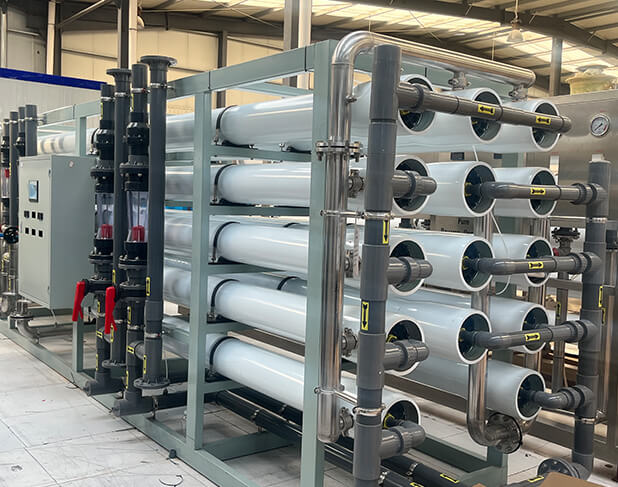
Product information table
Effluent Quality | Process Flow | Material | Application Industry |
Conductivity ≤10 μS/cm |
|
|
|
Conductivity ≤5 μS/cm | Single stage reverse osmosis | Fiberglass reinforced plastic+PVC/stainless steel | Manufacturing industry, electroplating industry, electronics industry, catering industry, power industry, chemical industry |
Conductivity ≤2 μS/cm | Double stage reverse osmosis | All Stainless Steel | Pharmaceutical industry, energy industry, optoelectronics industry |
Conductivity ≤1 μS/cm ≥1 MΩ·cm | Single stage reverse osmosis+mixed bed | Fiberglass reinforced plastic+PVC/stainless steel | Power industry, optoelectronic industry, manufacturing industry, electroplating industry, chemical industry |
Conductivity ≤0.067 μS/cm ≥15 MΩ·cm | Double stage reverse osmosis+EDI | Fiberglass reinforced plastic+PVC/stainless steel | Power industry, optoelectronic industry, energy industry, photovoltaic industry |
Conductivity ≤0.055 μS/cm ≥18.2 MΩ·cm | Single stage reverse osmosis+mixed bed+secondary polishing mixed bed | Fiberglass reinforced plastic+PVC/stainless steel | Optoelectronic industry, energy industry, photovoltaic industry, new material industry |
The reverse osmosis system is a membrane separation technology that uses the selective permeability of a semi-permeable membrane and uses pressure difference as the driving force to separate solutes and pollutants in water from pure water.
The reverse osmosis system applies high pressure to allow water molecules to pass through the semi-permeable membrane to form pure water, while impurities such as ions, organic matter, bacteria, and viruses are trapped on the inlet side of the membrane and then discharged from the concentrated water end. When the pressure in the system is greater than the osmotic pressure of the solution, water molecules will continue to penetrate the membrane, flow into the central tube through the water production channel, and finally flow out from the water outlet. In this way, the purpose of separation and desalination of impurities in water is achieved.
The main function of the reverse osmosis system is to remove pollutants such as inorganic salts, organic matter, microorganisms and colloids in the water, and provide high-purity water quality. It can achieve efficient desalination and purification of water quality, and is widely used in drinking water treatment, industrial process water treatment, seawater desalination and wastewater reuse.
Advantage :
● High desalination rate: The reverse osmosis system can remove most inorganic salts and organic substances in the water. The desalination rate can usually reach more than 90%, providing high-purity water quality.
● High recovery rate: The reverse osmosis system can convert most of the incoming water into pure water, improving water resource utilization efficiency and reducing water waste.
● Stable operation: The reverse osmosis system has stable operating characteristics, can maintain a high desalination effect for a long time, and has an automated control and monitoring system to ensure the normal operation of the system.
● Small footprint: Compared with traditional water treatment methods, the reverse osmosis system occupies a smaller area and is suitable for use in places with limited space.
● Easy operation: The operation of the reverse osmosis system is relatively simple. It only requires timely maintenance and cleaning to maintain its normal operation, without complex operating techniques.
● Wide application: Reverse osmosis systems have broad application prospects in the fields of drinking water treatment, industrial production, seawater desalination and wastewater reuse, and can meet the ● water treatment needs in different scenarios.
Reverse osmosis systems are widely used in the following fields:
● Drinking water treatment: used to remove harmful substances and microorganisms in water to provide safe and clean drinking water.
● Industrial process water treatment: used to remove dissolved solids, metal ions and organic pollutants in water to ensure the stability and quality of the industrial production process.
● Desalination: Converting seawater into fresh water to meet the water supply needs of coastal areas.
● Wastewater reuse: Treat industrial wastewater and urban sewage to meet the requirements for reuse, reducing water consumption and environmental pollution.
In short, the reverse osmosis system achieves desalination and purification of water quality through membrane separation technology. It has the advantages of high desalination rate, high recovery rate, stable operation, small footprint, easy operation, and moderate price. It is widely used in the fields of drinking water treatment, industrial process water treatment, seawater desalination and wastewater reuse. It can meet the water treatment needs in different scenarios and provide people with clean and safe water resources.
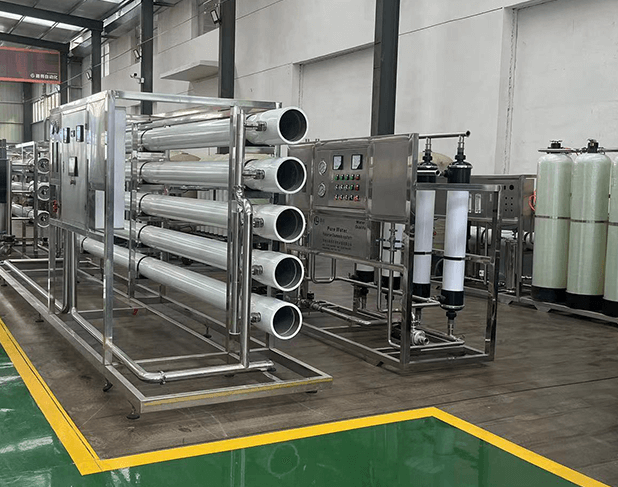 | 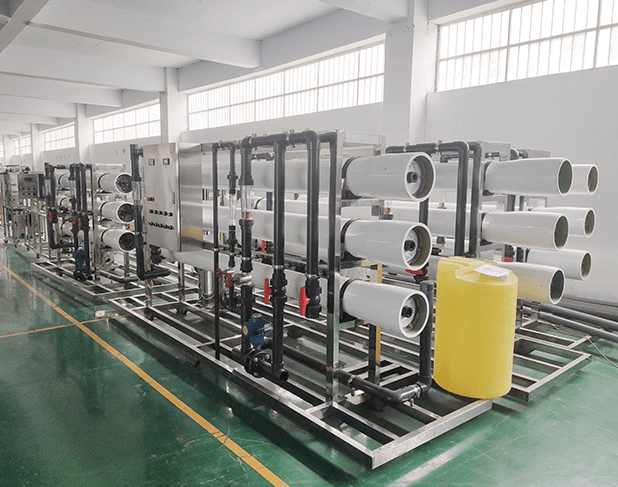 | 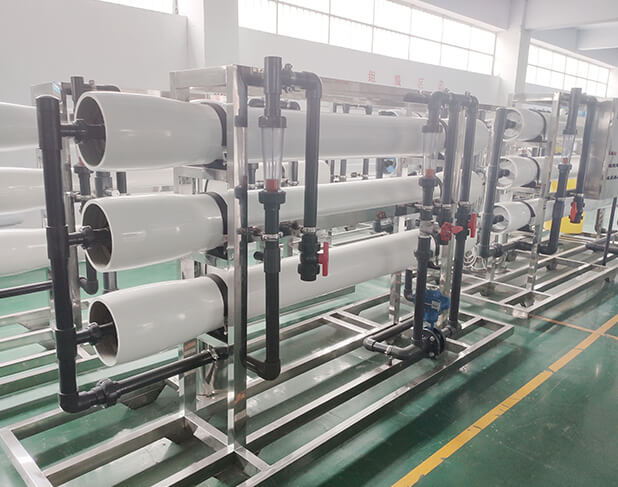 | 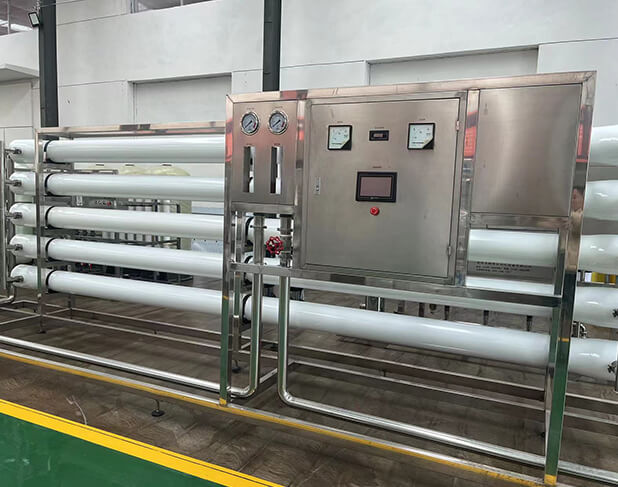 |